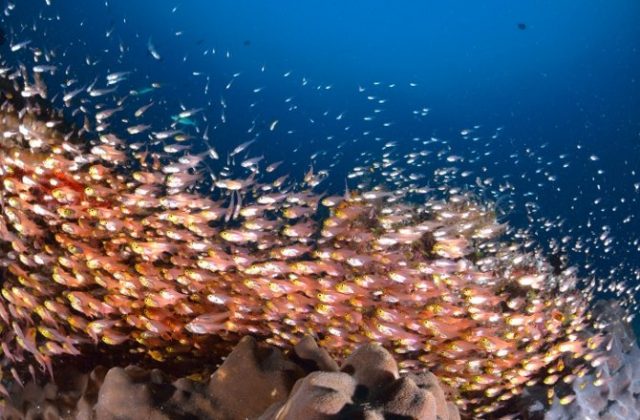MI weekly selection #164

Fish communicate to stay close to each other
Fish use calls to stick together as a group, a new study suggests. Researchers played recordings of bigeye vocalizations for captive wild bigeyes, and noted that their own vocalizations increased and they swam more closely together than they did when no recordings were played. “This study means that fish are now the oldest vertebrate group in which this behavior has been observed, and that has interesting implications for our understanding of evolutionary behavior among vertebrates,” said Lucy van Oosterom, lead author of the study.
Mysterious bright object may be massive supernova
A massive cosmic blast first seen in June may be a supernova more powerful than any seen by astronomers before. ASASSN-15lh, about 3.8 billion light-years away, was observed with the All Sky Automated Survey for SuperNovae, and researchers are trying to pin down whether it is a supernova, a superluminous supernova or something else entirely.
Humans may have been in Arctic 45,000 years ago
Marks on the bones of a woolly mammoth found in Siberia suggest that humans may have been in the Arctic about 10,000 years earlier than previously thought. The bones, which are about 45,000 years old, indicate the creature was killed by humans using pointed projectiles. Researchers think the humans moved that far north in search of mammoths.
Brain waves correlates with how patients respond to anesthesia
Brain waves may help predict differences in the way certain people react to anesthesia, allowing dosage to be tailored to the patient. Researchers found that some study participants would fight the drug propofol’s effects, while others were more susceptible to it. The difference was noticeable in the subjects’ brain waves even before the drug was given.
Bio-activated concrete helps promote algae growth in marine environment
Researchers in Japan have discovered a way to develop concrete that promotes algae growth for use in marine environments. The process uses amino acids and grows algae up to 10 times faster than regular concrete. They hope to create a seaweed bed with the material.
1 comment
[…] Posted in Humanities & Social Sciences, Noticias, Science, Technology, Weekly Selection | 0 comments […]